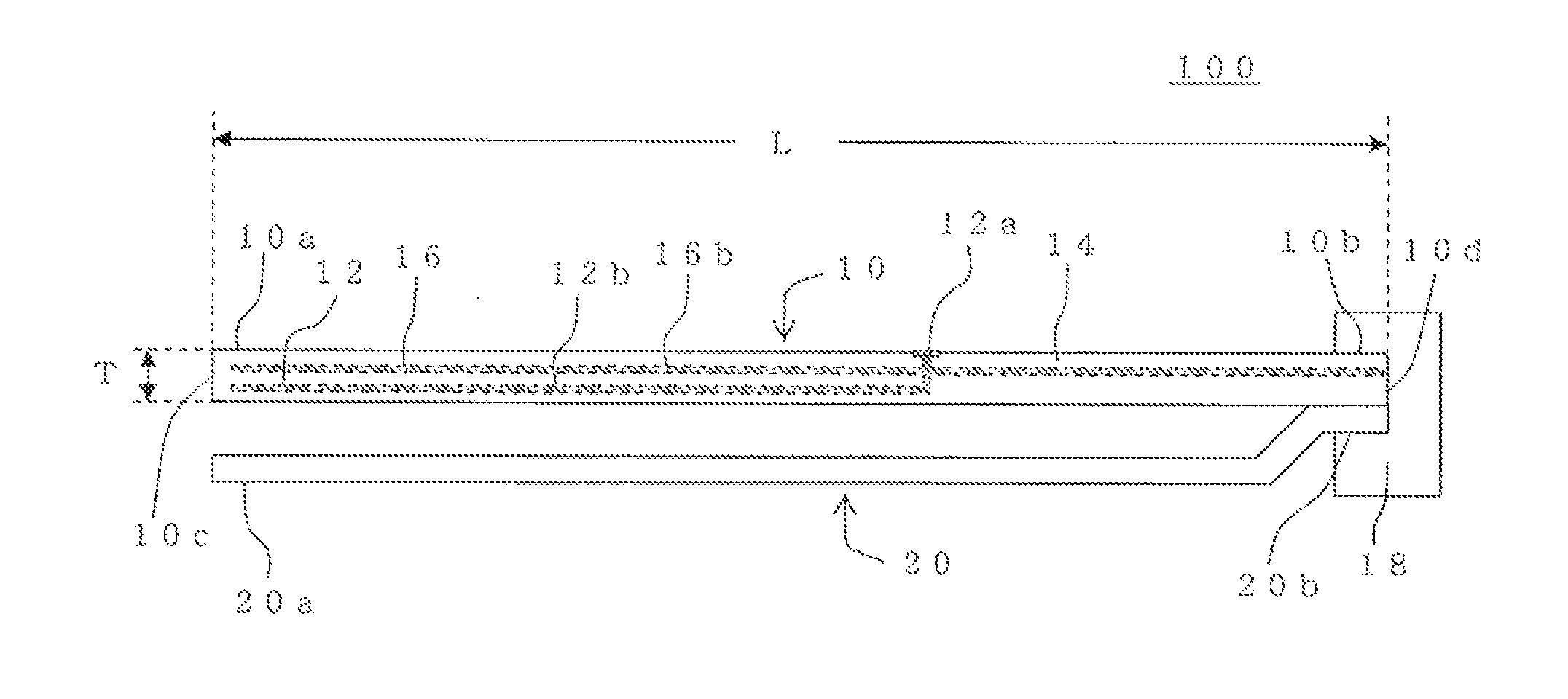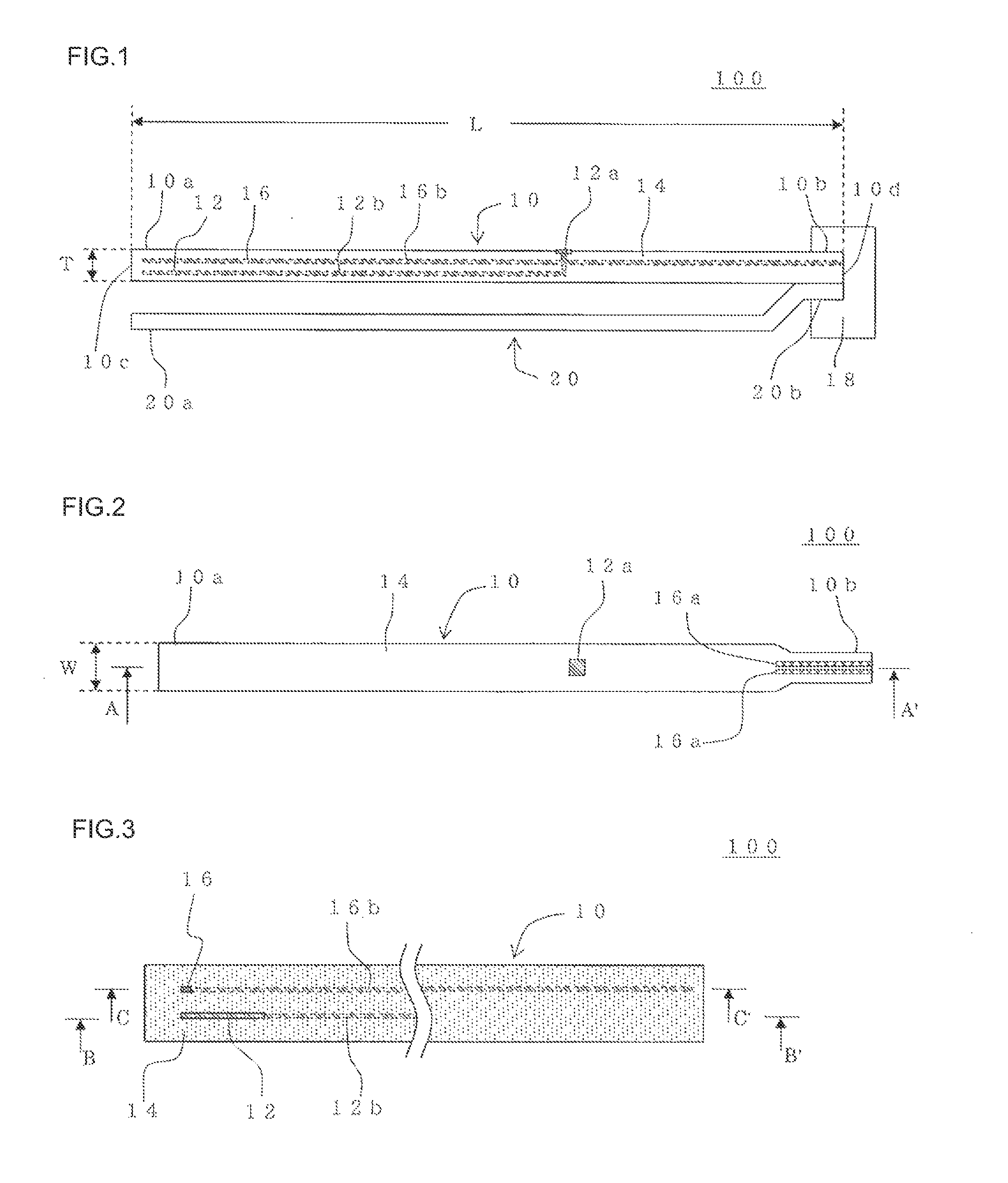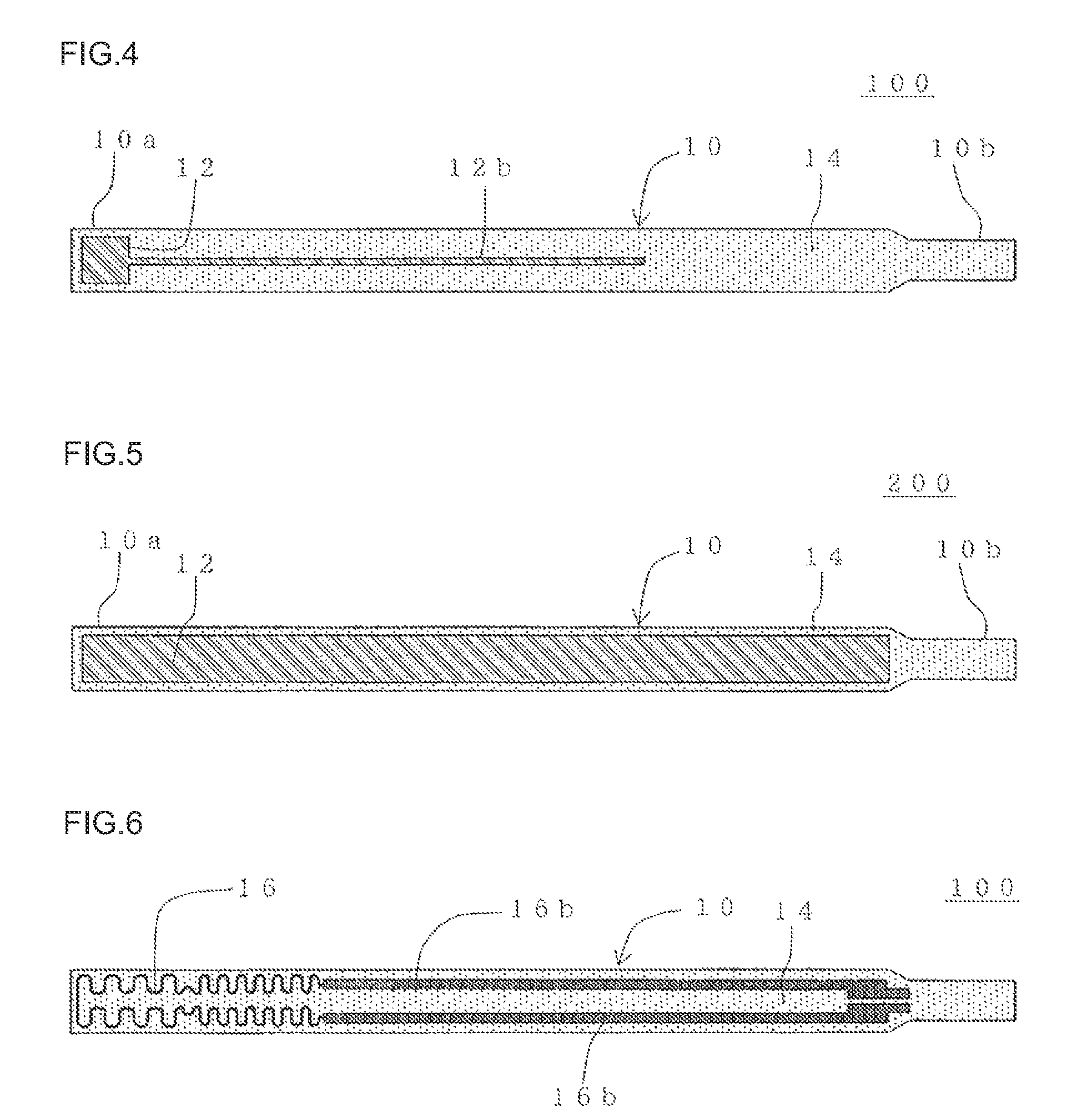Particulate matter detection device
a detection device and particulate matter technology, applied in auxillary pretreatment, separation processes, instruments, etc., can solve the problems of large error, small amount of particulate matter measured, and increased cost, and achieve the effect of reducing the size of the particulate matter detection device, simple configuration, and low cos
- Summary
- Abstract
- Description
- Claims
- Application Information
AI Technical Summary
Benefits of technology
Problems solved by technology
Method used
Image
Examples
example 1
Preparation of Forming Raw Material
[0114]An alumina pot was charged with alumina as dielectric raw material, polyvinyl butyral as binder, di(2-ethylhexyl) phthalate as plasticizer, sorbitan trioleate as dispersant, and an organic solvent (xylene:butanol=6:4 (mass ratio)) as dispersion medium. The components were mixed to prepare a slurried forming raw material for forming a green sheet. 7 parts by mass of the binder, 3.5 parts by mass of the plasticizer, 1.5 parts by mass of the dispersant, and 100 parts by mass of the organic solvent were used with respect to 100 parts by mass of alumina.
[0115]The slurried forming raw material thus obtained was stirred under reduced pressure to remove bubbles, and the viscosity of the slurried forming raw material was adjusted to 4 Pa·s. The viscosity of the slurry was measured using a Brookfield viscometer.
(Forming Process)
[0116]The slurried forming raw material obtained by the above method was formed into a sheet using a doctor blade method. The ...
PUM
| Property | Measurement | Unit |
|---|---|---|
| width | aaaaa | aaaaa |
| thickness | aaaaa | aaaaa |
| longitudinal length | aaaaa | aaaaa |
Abstract
Description
Claims
Application Information
 Login to View More
Login to View More - R&D
- Intellectual Property
- Life Sciences
- Materials
- Tech Scout
- Unparalleled Data Quality
- Higher Quality Content
- 60% Fewer Hallucinations
Browse by: Latest US Patents, China's latest patents, Technical Efficacy Thesaurus, Application Domain, Technology Topic, Popular Technical Reports.
© 2025 PatSnap. All rights reserved.Legal|Privacy policy|Modern Slavery Act Transparency Statement|Sitemap|About US| Contact US: help@patsnap.com



